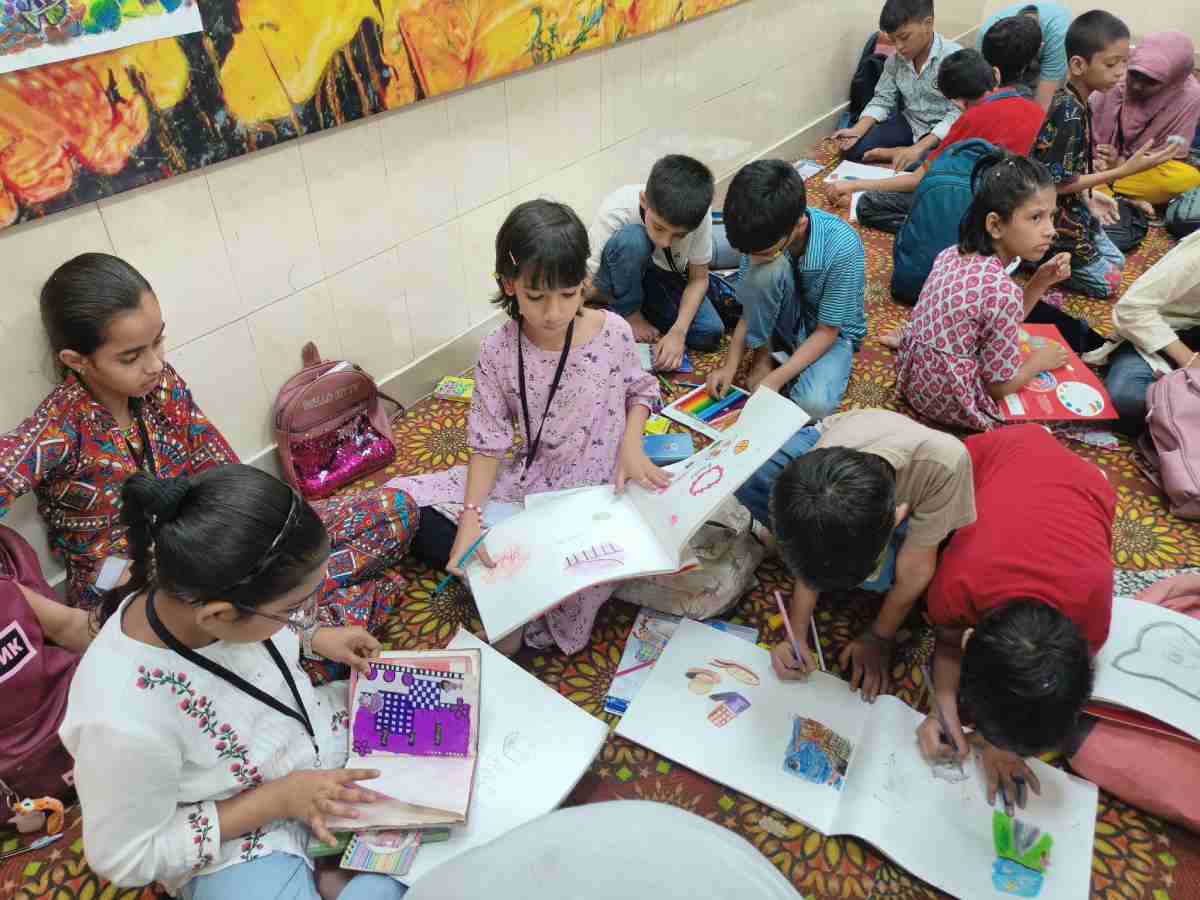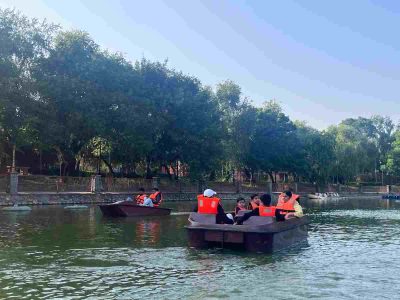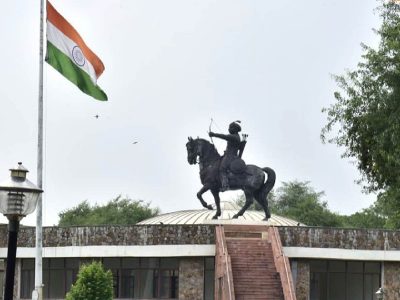In one of the rooms at the Urdu Academy office in Delhi, the gentle strains of Hazaaron Khwahishen Aisi—a timeless ghazal written by Mirza Ghalib and famously sung by Jagjit Singh—fill the air. Children, seated in rows, sing in unison. The ghazal speaks of thousands of unfulfilled desires, and fittingly, these children too have arrived with dreams—of learning, growing, and discovering new talents.
These students are part of a free summer camp organised for the first time by the Urdu Academy, aimed at schoolchildren from Classes 4 to 12. The month-long camp, held on the Academy’s premises, offers a vibrant mix of language, literature, music, and art—all deeply rooted in the rich traditions of Urdu.
Children from over 40 schools across Delhi are participating, with nearly 200 students attending the sessions.
A musical introduction to Urdu
At the ghazal-singing workshop, children sit cross-legged, humming soft melodies under the guidance of Zeeshan Zamir Ahmad, a music teacher at Jamia Millia Islamia.
“We start with the basics—sur, taal, and simple couplets,” he explains. “The goal isn’t to turn them into singers in a week but to help them appreciate the lyrical beauty and emotional depth of a ghazal.”
Ahmad adds with a smile, “I am happy that they are interested in learning music. They have done wonderful work in just 15 days.”
Fozia, a 16-year-old from Arun Modern Public Senior Secondary School, shares her experience: “I used to hear ghazals at home but never understood them. Now, I know the meaning of the lines I sing, and I love how the words flow.”
Exploring new creative worlds
The camp’s activities go beyond music. Students explore Urdu calligraphy, fine arts, personality development, Urdu language appreciation, and Dastangoi—the traditional art of storytelling. The aim is to create a space where children not only gain new skills but also connect deeply with the cultural heritage of Urdu.
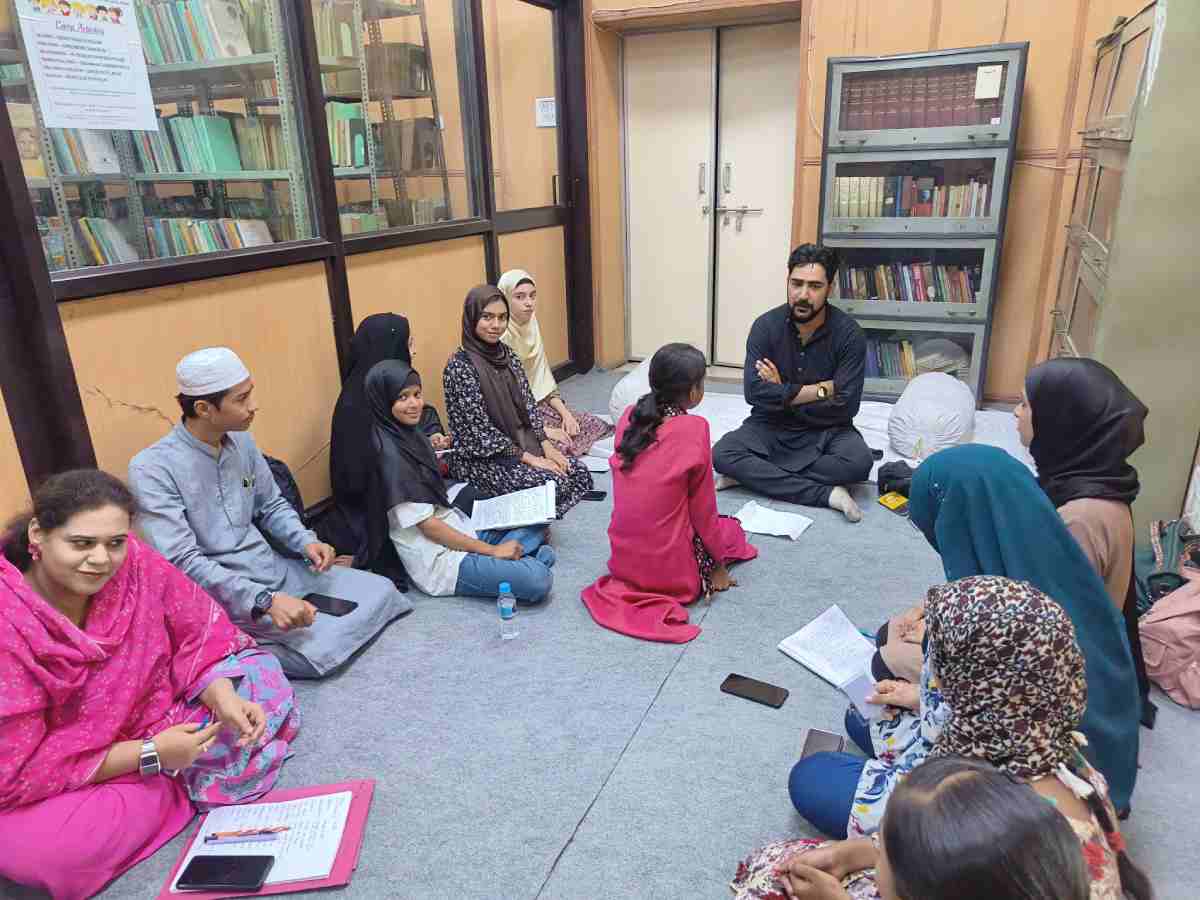
For many participants, it is their first exposure to these art forms.
“I didn’t know anything about Urdu calligraphy before,” says 17-year-old Aliza Wajid from Chandni Chowk. “Now I’ve started writing through it. It feels like drawing, but with so much beauty and meaning.”
Calligraphy instructor Mohd Zubair explains, “Calligraphy is a completely new concept for them. We’re teaching them to write in different scripts and styles.”
In the fine arts section, children mix colours and sketch scenes themed around environmental protection.
“It has been a wonderful experience,” says Tarfiya, a Class 11 student. “We have learned to paint differently this time, together with friends, on the same platform.”
“We are teaching them the basics of painting. And they are creating such beautiful work,” says Shiraz Usmani, a freelance painting instructor.
Keeping oral traditions alive
Meanwhile, the Dastangoi sessions have become a daily favourite. Popular storyteller and writer Syed Sahil Agha brings alive tales from Urdu folklore, captivating young listeners.
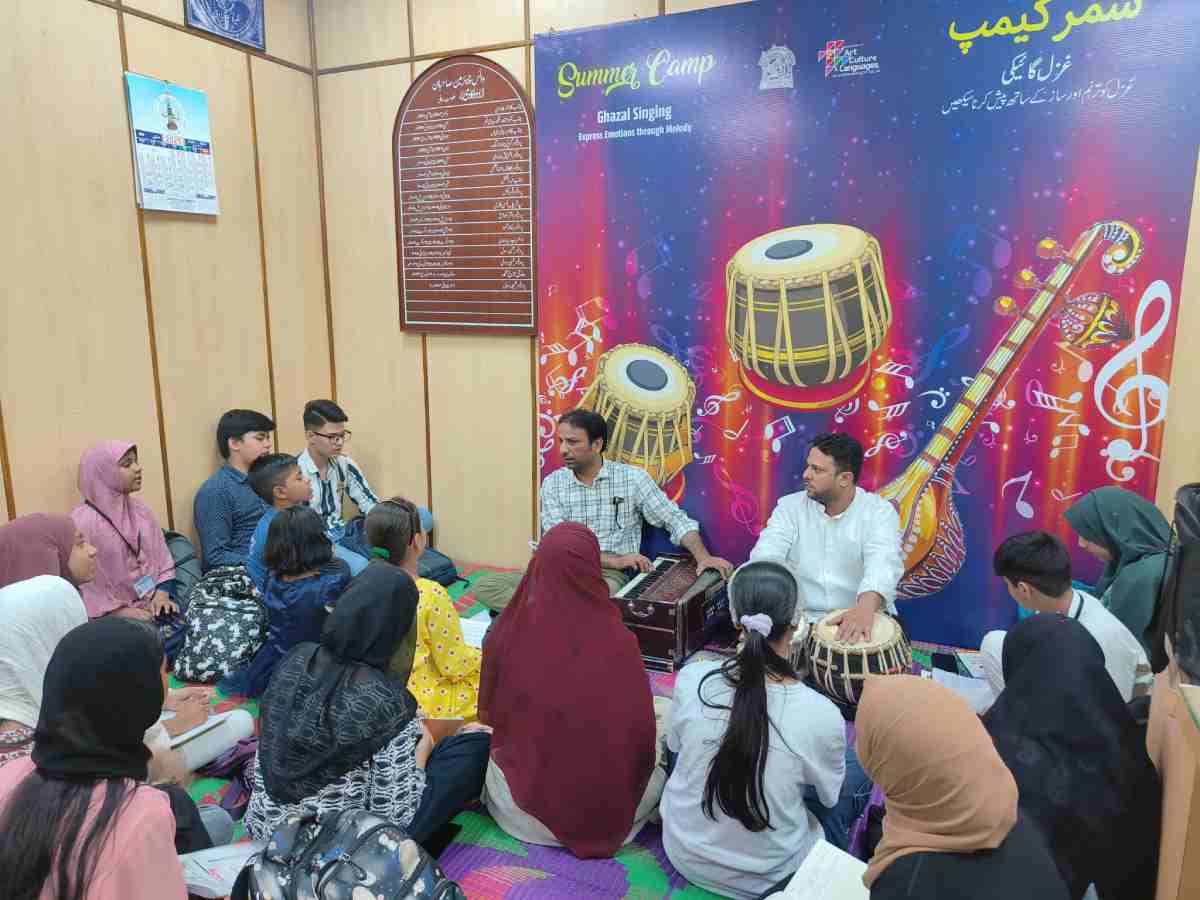
“I feel like I’m part of the story,” says 12-year-old Aisha Anees. “I did not know Urdu had so many magical stories. I want to be a storyteller someday.”
Building confidence through creativity
Workshops on personality development focus on group discussions, role play, and creative writing.
“We’re learning how to speak, how to face people, communication skills, confidence, adaptability, and positive habits,” says 13-year-old Hadiya.
An official from the Urdu Academy told Patriot that their goal is to provide an enriching and memorable summer experience.
Also Read: Urdu poetry is not just a mode of expression, it’s an exploration, says Azhar Iqbal
“We wanted to make the vacation both meaningful and enjoyable,” the official said. “This is our first time running such a comprehensive, no-cost programme, and the response has been overwhelming. Our focus is to expose young minds to the elegance of Urdu and its cultural expressions through creative and engaging methods.”
He added that the camp is not about rote learning or academics. “It’s about appreciating stories, scripts, songs, and self-expression.”
The camp, which began on May 15, will conclude on June 5. Students will later showcase what they have learned—through calligraphy displays, paintings, ghazal performances, and Dastangoi sessions.
For many children, however, the impact will last far beyond the last day.
“This camp made my summer special,” says Mohd Touheed, a Class 6 student. “I learned a new language, sang a ghazal, and made new friends. I wish it did not end.”

